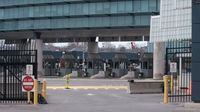On a summer morning at Bluff Point Golf Resort in Plattsburgh, New York, the parking lot once buzzed with a steady stream of cars bearing Quebec and Ontario license plates. For years, the resort’s owner, Paul Dame, could count on seeing 20 or 30 Canadian vehicles lined up as golfers from across the border made their regular pilgrimage. But lately, that familiar sight has all but vanished. "Over the last several months, it has been more like one or two cars," Dame told NPR, his voice tinged with disappointment. "It's tough, because we've developed this relationship with the cross-border economy. And now here we are, the rug getting pulled out from underneath us."
Dame’s experience is far from isolated. Across upstate New York and neighboring border states, a sharp and sudden drop in Canadian visitors is sending ripples through local economies that have long relied on their northern neighbors. According to a recent report published in August 2025 by Statistics Canada, Canadian residents made just 1.7 million return trips by motor vehicle back into Canada from the United States in July—a nearly 37% plunge from the same month last year. The numbers, stark as they are, confirm what many business owners and tourism officials have been witnessing firsthand: the once-bustling border crossings are now eerily quiet.
It’s not just New York feeling the pinch. In the Buffalo Niagara region, Canadian border traffic has dropped noticeably in recent months, as reported by local media on August 21, 2025. Leah Mueller, vice president of sales and services at Visit Buffalo Niagara, said the impact is being felt across the tourism sector, from smaller tour groups to sightseeing boats. "It's a decline that's not stopping things from happening, but it is affecting the revenue that people are collecting," Mueller explained, highlighting how the absence of Canadian visitors is leaving a mark on the region’s bottom line.
National data paints a similar picture. Between January and May 2025, Canadians made just over 7 million visits to the United States, according to the U.S. International Trade Administration. That’s a nearly 17% decrease compared with the same period in 2024. The U.S. Travel Association, in a statement shared with NPR, confirmed that its "latest view continues to show a decline in travel from Canadian residents to the United States, consistent with the recent Canadian data released."
The reasons behind the downturn are as complex as they are consequential. Tensions have been simmering between Washington and Ottawa after President Trump, earlier this year, made the provocative vow to pursue statehood for Canada and imposed steep tariffs on Canadian goods. The fiery rhetoric and economic moves have left many Canadians feeling personally targeted, prompting some to reconsider their travel plans. Dame, the golf resort owner, empathizes with his Canadian clientele. "It's a very personal situation. They've been attacked personally, and it's emotional," he said. "It's something that we would react [to] the same way if the opposite was happening to us."
Compounding the diplomatic chill is the strength of the U.S. dollar, which has made trips south more expensive for Canadians. For many, the combination of political friction and unfavorable exchange rates has been enough to tip the scales against cross-border getaways. The result is a tourism slump that’s being felt from golf resorts and outlet malls to hotels and restaurants up and down the U.S. side of the border.
The stakes are high. In 2024, the U.S. welcomed 20.4 million visits from Canadians, making Canada the country’s top source of international tourists, according to the U.S. Travel Association. Those visits generated a staggering $20.5 billion in spending and supported 140,000 U.S. jobs. For border communities, Canadian visitors aren’t just a bonus—they’re a lifeline. As Mueller of Visit Buffalo Niagara put it, "The Canadian market is critical. When it slows down, everyone feels it."
Some states are scrambling to soften the blow. In June 2025, Maine Governor Janet Mills made an official visit to Canada, personally urging Canadians to keep visiting her state. Maine, which saw nearly 800,000 Canadian visits in 2024, has also installed new road signs at its border crossings, emblazoned with a cheerful message: "Bienvenue, Canadiens!" The hope is that a warmer welcome—and a bit of cross-border goodwill—might help reverse the trend.
Meanwhile, business owners like Dame are adapting as best they can. With fewer Canadians coming through the door, he’s shifted some of his marketing efforts to other parts of New York and Vermont, searching for new customers to fill the gap. But the loss of regulars from across the border is hard to ignore. "We’ve always had a special relationship with our Canadian guests," Dame said. "It’s not just about dollars and cents—it’s about community."
For now, there’s little certainty about when—or if—things might return to normal. The political climate remains tense, and the economic headwinds show no sign of abating. Yet, even in the face of these challenges, there are glimmers of hope. Tourism officials and business leaders on both sides of the border are quietly optimistic that, with time and effort, the deep ties between their communities will prove resilient.
"We’re not giving up," Mueller insisted. "We know how important these relationships are. We’re going to keep working to bring people together, no matter what the headlines say."
As the summer draws to a close, the empty parking spaces at Bluff Point Golf Resort serve as a stark reminder of the fragile nature of cross-border commerce—and the enduring power of politics to shape the everyday choices of ordinary people. For communities along the U.S.-Canada border, the hope is that, before long, those spaces will once again be filled with the familiar sight of Canadian license plates and the friendships they represent.




